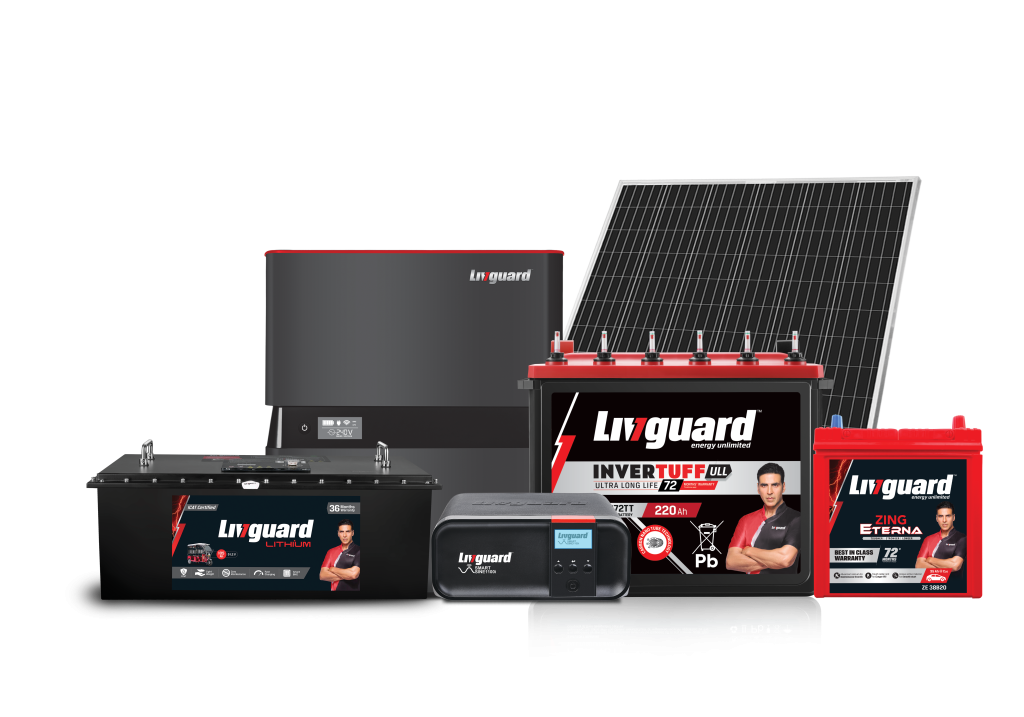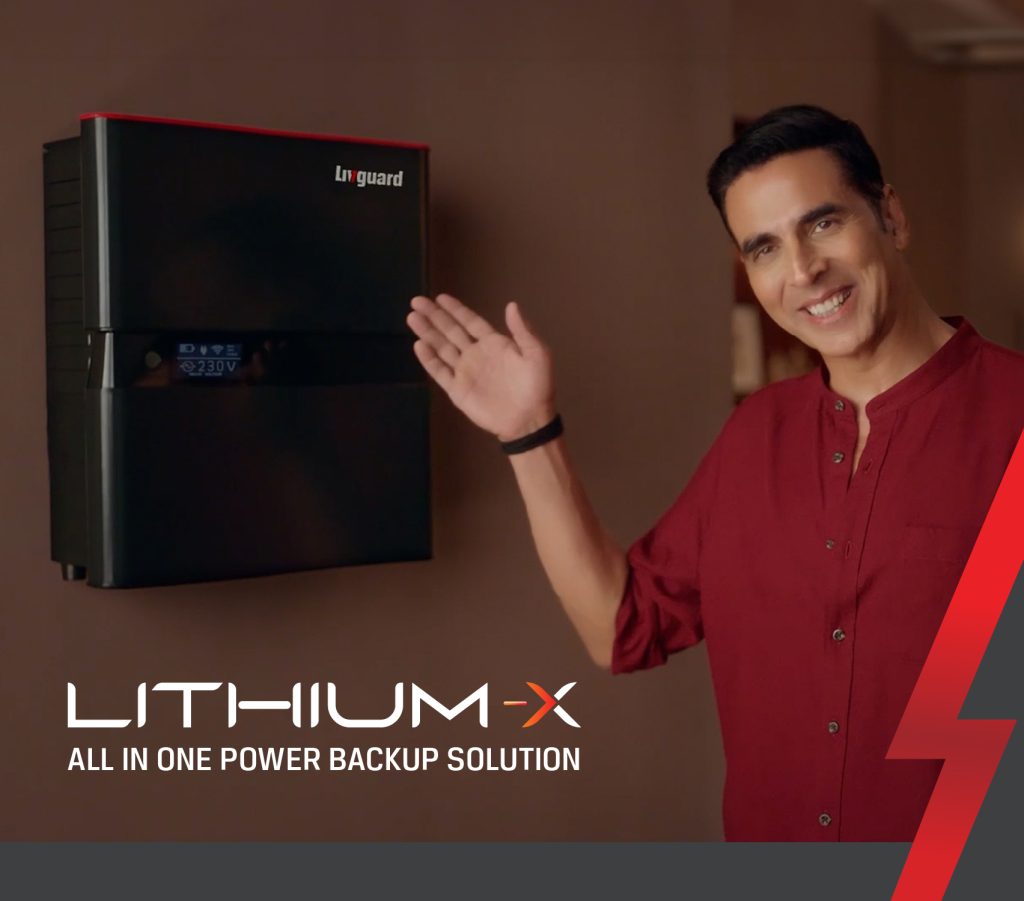In a world where homes are no longer just shelters but intelligent, always-on ecosystems, energy storage is being redefined. Batteries today are expected to be more than backup; they must be smart, safe, sustainable, and seamlessly integrated into the digital lifestyles of tomorrow. Standing tall at this intersection of innovation and impact is Livguard, a brand that’s fast becoming synonymous with future-ready lithium energy solutions tailored for the connected Indian household.
In an exclusive conversation with Shweta Kumari, Sub-Editor at The Battery Magazine, Mr. Anant Misra, Vice President – Lithium Business at Livguard, opens up about what it takes to lead this revolution. From decoding the promise and pitfalls of next-gen chemistries like solid-state and silicon-anode, to outlining Livguard’s in-house breakthroughs in BMS, recycling, and localization—this dialogue offers rare insight into how energy storage is evolving beyond specs and spreadsheets into a true lifestyle enabler.
Join us as we unpack how Livguard is not just powering homes—but empowering the future, one lithium cell at a time.
1. What are the key limitations of current lithium-ion battery technologies when it comes to energy density, and how are researchers trying to overcome them?
One of the fundamental limitations of current lithium-ion battery technology lies in its energy density, which dictates how much energy a battery can store relative to its weight or volume. Present lithium-ion cells typically achieve energy densities of 150-270 Wh/kg. However, for many high-demand applications like electric vehicles (EVs) and advanced energy storage systems, this falls short of what’s needed for extended range and compact, powerful solutions. The lithium-ion architecture inherently limits how much lithium can be stored in the anode and cathode materials. To overcome this, researchers are exploring novel chemistries and materials. Silicon-based anodes, for example, can theoretically store up to ten times more lithium than conventional graphite, dramatically enhancing energy density. However, silicon’s tendency to expand during charge cycles creates mechanical stress, leading to shorter battery lifespans. Innovations in nanostructuring and polymer coatings are being tested to mitigate this.
These advancements align with the growing demand for no-fuss, future-ready power solutions designed to power the homes of tomorrow. With smart, connected living becoming a norm across urban and rural India, battery systems must be compact, high-performance, and maintenance-free, meeting the needs of an always-on, gadget-driven lifestyle. Solid-state batteries are also gaining traction, as they promise higher energy density and enhanced safety. Though still in development, these innovations are integral to future designs. The industry is balancing innovation with manufacturability and longevity, striving for breakthroughs that merge capacity with stability. Livguard’s lithium battery offerings, ranging from 2kWh to 10kWh capacities with advanced LFP and NMC chemistries, reflect this evolution. Our IP67-rated, telematics-enabled batteries are already addressing real-world efficiency and durability challenges in Indian conditions.
2. How do you assess the commercial viability of next-gen battery technologies like solid-state, lithium-sulfur, or silicon-anode batteries?
Evaluating the commercial viability of next-gen battery technologies like solid-state, lithium-sulfur, or silicon-anode batteries involves assessing multiple dimensions: performance, safety, scalability, cost-effectiveness, and compatibility with existing manufacturing infrastructure. Solid-state batteries, for instance, offer a compelling proposition with our enhanced energy density and improved safety due to non-flammable solid electrolytes. However, our high manufacturing costs and technical barriers in achieving reliable room-temperature performance have delayed mass production. Lithium-sulfur batteries, on the other hand, are lauded for our high theoretical energy density and use of abundant, low-cost materials. Yet, our short lifecycle and issues with sulfur dissolution pose challenges. Silicon-anode technologies are closer to commercial feasibility, as they are being incrementally integrated with graphite to boost energy density while mitigating expansion issues.
Across all of these, what’s essential is ensuring they meet the evolving demands of modern homes – homes equipped with connected devices and automation, where efficient, productive energy solutions are key to minimising disruption. Scalable battery systems must power more appliances with faster charging, longer backup, and greater compatibility with solar technologies. The true commercial potential lies in solutions that deliver not just superior performance but also plug seamlessly into today’s smart energy ecosystem. With no-fuss design, rapid recharge, and intelligent management features increasingly becoming the norm, these technologies must uphold the narrative of enabling a tech-embedded, connected lifestyle.
3. How important is balancing energy density with battery safety, and what design trade-offs are commonly made in this space?
Balancing energy density with battery safety is one of the most critical design imperatives in energy storage systems. As energy density increases, so does the potential risk associated with thermal runaway, electrolyte leakage, and structural degradation of battery components, especially under abuse conditions like overcharging or extreme temperatures. High energy density chemistries, such as those found in next-gen lithium-ion batteries, are prone to flammability and short-circuiting if not properly managz̄ed. This necessitates robust battery management systems (BMS), advanced thermal regulation, and intelligent design protocols. Common design trade-offs include the use of safer but less energy-dense chemistries, additional casing or cooling mechanisms that increase size or weight, or accepting shorter cycle life in exchange for higher capacity.
For future-ready homes reliant on uninterrupted power for everything from online schooling to smart appliances, these trade-offs must be optimized to ensure performance without compromising safety. Systems designed for these environments must offer seamless power delivery, operate quietly, and require zero maintenance, ideally through intelligent, connected designs that self-regulate and alert users to potential issues. Smart homes are shifting expectations from “power backup” to always-on energy infrastructure, reinforcing the need to embed safety deeply into design while delivering the capacity modern lifestyles demand. Our lithium batteries are a great example, offering audio-visual thermal runaway alerts, high-efficiency MOSFETs, and BLE-enabled diagnostics, all while remaining rugged enough for harsh monsoon environments and built to IP67 standards. In addition, we manufacture our Battery Management System (BMS) in-house, which ensures optimal performance while maintaining the highest safety standards throughout the battery’s lifecycle.

4. Can you walk us through a breakthrough in energy storage innovation that you believe could disrupt the battery industry in the next five years?
A promising breakthrough on the horizon is the commercialisation of solid-state batteries. These batteries replace the flammable liquid electrolyte found in traditional lithium-ion cells with a solid electrolyte, enabling not only safer operation but also significantly higher energy density. The solid-state design mitigates the risk of leakage, fire, and dendrite formation, which are key concerns in conventional lithium-ion batteries. Major automotive and tech giants are investing heavily in this space, aiming for large-scale deployment within the next five years. This innovation aligns perfectly with the demands of a more connected, energy-dependent lifestyle.
Such innovation enables energy solutions to transition from bulky, back-end infrastructure to sleek, wall-mounted, intelligent systems that integrate with smart home ecosystems. With consistent backup, ultra-fast recharge, and zero-maintenance performance, these systems become critical enablers of a seamless, digitally integrated household. The high energy-to-weight ratio also makes them ideal for electric mobility, potentially opening new verticals for energy storage firms.
As we reimagine our living spaces, where gadgets, automation, and data flow dominate, solid-state technology could redefine what consumers expect from our energy backup systems. Whether for entertainment, security, or productivity, power solutions will have to work silently and efficiently in the background, making future-ready innovations like this one central to powering the homes of tomorrow.
5. Given the geopolitical and environmental challenges of lithium and cobalt mining, how are companies working to secure a more stable and ethical supply chain?
The sourcing of lithium and cobalt, critical raw materials in battery production, faces scrutiny due to geopolitical tensions, environmental degradation, and human rights concerns, particularly in regions like the Democratic Republic of Congo. To secure a stable and ethical supply chain, companies are adopting a multi-pronged strategy. This includes diversifying sourcing locations to reduce dependency on high-risk areas, investing in transparent supply chain practices, and supporting fair-trade mining initiatives. Major players are also forging strategic partnerships with ethically certified mining operators and deploying blockchain technology for material traceability.
These practices support a broader industry shift toward powering a more ethical and efficient energy ecosystem. Solutions developed for the connected homes of tomorrow must align with consumer demand for sustainability and social responsibility. From solar-ready, maintenance-free energy systems to integrated inverter solutions that provide long-term cost recovery and peace of mind, these advancements reflect a commitment to building resilient homes without compromising on values. By embedding responsibility into supply chains, energy brands can offer solutions that are both technologically advanced and ethically grounded, essential to earning the trust of an increasingly conscious consumer base.
6. What role does battery recycling and second-life battery use play in reducing pressure on raw material supply chains?
Battery recycling and second-life applications are rapidly becoming crucial strategies in addressing the growing demand for raw materials like lithium, cobalt, and nickel. With the surge in electric mobility and stationary energy storage, reclaiming valuable materials from end-of-life batteries helps alleviate pressure on primary mining activities. Recycling not only recovers up to 95% of materials like cobalt and nickel but also significantly reduces environmental impact by diverting hazardous waste from landfills and reducing the carbon footprint of battery production.
Second-life battery use, repurposing batteries that are no longer fit for EV use but still retain considerable capacity, offers an interim solution for stationary energy storage. These batteries can be effectively used in less demanding applications such as home backup systems or off-grid solar installations. This supports the larger shift toward smart, efficient, and connected power systems designed to enhance quality of life in every home. Such systems meet today’s expectations: compact, intelligent, and tuned to power the modern household through every outage or interruption.
By investing in battery circularity, manufacturers are not just cutting costs, they’re ensuring long-term material availability while championing environmental stewardship. These innovations feed into a bigger narrative of resilience and sustainability, which is central to the idea of homes powered by tomorrow’s technology. Livguard lithium-ion batteries, which already offer long operational life and are built with recyclability in mind, represent a step forward in reducing lifecycle waste and supporting second-life applications in home and fleet energy systems. Additionally, at our Pune lab, we are consistently testing advancements in lithium technology and actively developing in-house recycling processes to further enhance circularity and reduce environmental impact.

7. How are battery manufacturers adapting to regulatory pressures around sustainability, traceability, and carbon footprint reduction?
Battery manufacturers are under increasing pressure to align with evolving regulations around sustainability, traceability, and carbon footprint minimization. Regulatory frameworks like the European Union’s Battery Directive and similar mandates in other regions are prompting industry players to rethink material sourcing, production methods, and lifecycle management. In response, companies are adopting sustainable practices such as using recycled materials, investing in energy-efficient manufacturing, and reducing reliance on conflict minerals.
Traceability is a critical focus area. Digital tools like blockchain and advanced supply chain management software are being implemented to track materials from mine to product, ensuring compliance with ethical and environmental standards. Lifecycle assessments (LCAs) are becoming a standard practice to quantify the environmental impact of battery production and use, helping manufacturers meet carbon reduction targets.
For future-ready homes built around automation and connected technologies, power systems must be as responsible as they are reliable. Integrated energy solutions must be equipped to meet regulatory expectations while still delivering fast charging, consistent backup, and high appliance compatibility. Sustainable manufacturing practices ensure these smart systems are not just effective but also aligned with consumer values, helping shape a greener and more accountable energy future.
8. How do localized battery manufacturing hubs help de-risk the global battery supply chain, especially for growing EV and energy storage markets?
Localized battery manufacturing hubs play a pivotal role in de-risking the global battery supply chain, especially amid rising demand for electric vehicles (EVs) and energy storage systems. Concentrated production in a few countries has historically made the industry vulnerable to geopolitical tensions, export restrictions, and logistical bottlenecks. By setting up localized hubs, companies can mitigate these risks, ensure faster time-to-market, and reduce carbon emissions associated with long-distance shipping.
Localized manufacturing also fosters greater adaptability to regional regulations, consumer preferences, and climate conditions. It promotes the development of local supply chains and skilled labor, enhancing economic resilience. Government incentives such as India’s PLI (Production Linked Incentive) scheme further encourage domestic battery production, boosting national self-reliance in critical technologies.
For homes increasingly dependent on uninterrupted power to fuel digital lifestyles, locally manufactured systems promise better service, faster upgrades, and more responsive support. These systems must be aesthetically designed, space-saving, and capable of running multiple appliances, all while being maintenance-free and solar-compatible. Localised production supports such innovation, ensuring energy solutions that are tailor-made for India’s unique power landscape. This approach strengthens not just infrastructure but also consumer trust, delivering on the vision of powering the homes of tomorrow. Contributing to this shift, Livguard’s R&D facility in Pune is in advanced stages of developing indigenous lithium cell technology, an important milestone that not only enhances localisation but also reinforces supply chain resilience and innovation leadership within India.



